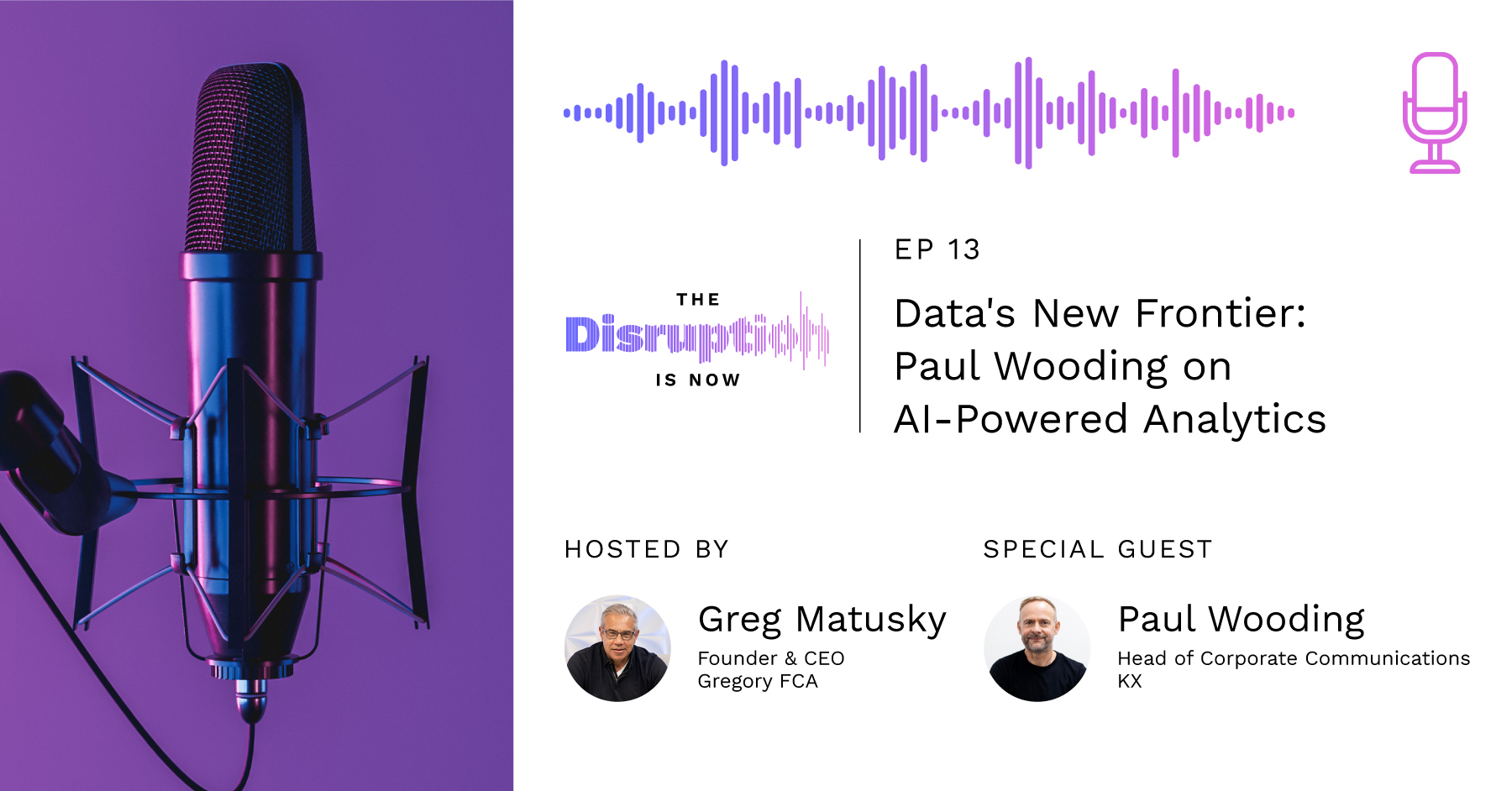In this conversation for The Disruption Is Now, host Greg Matusky speaks to KX‘s Head of Corporate Communications, Paul Wooding, about their similar visions for the capabilities and potential of generative AI.
You’ll hear insider perspectives on AI adoption as well as tactics and mindsets for getting the most out of AI day-to-day. They also cover the importance of AI leaders in any company, from CEO encouragement to finding the “superusers” who attract others with their success.
Greg and Paul share an appreciation for AI’s expansive possibilities, and they offer a glimpse of the transformed future of creative work and the value of human-AI collaboration.
Watch now:
Leadership sets the AI tone
Paul explains how his CEO actively uses AI himself and openly encourages the rest of the company to adopt it as well. This top-down support reduces internal resistance to using these new tools because employees have clear permission as well as guardrails — like not sharing confidential information with AI models.
Leaders showing the strategic value of AI through their own usage sets the cultural tone and empowers teams to fully embrace AI in a responsible way.
Superusers drive adoption
Paul discusses how some team members immediately become AI superusers, achieving dramatic productivity gains. These superusers serve an important role in driving wider adoption.
As colleagues take note of superusers’ output and efficiency boost from AI, they better understand the practical benefits. Seeing value demonstrated firsthand helps socialize AI internally and convinces hesitant teams through real-world use cases, which are often more effective than simple encouragement.
Innovate with “golden use cases”
Rather than defaulting to basic applications, Paul advocates focusing innovation on golden use cases. This means addressing major friction points in workflows that were previously seemed unfixable.
Finding new value-adds that are only possible with AI, whether that’s automating manual reporting or generating unique creative concepts in line with company guidelines, can attract even skeptics.
Custom models boost performance
Paul touches on the importance of training custom AI models on internal data rather than relying on generic engines like ChatGPT. Inputting vast company documentation and past creative materials teaches models the desired tone, voice, knowledge, and behavior you expect.
This customization removes unwanted biases from generative AI while improving the relevance, accuracy, and performance of outputs like CEO quotes or campaign messaging.
Prompts and constraints tap creativity
While AI on its own may generate vanilla content ideas, Paul notes that thoughtful prompts and constraints can produce more interesting options that humans can build on.
Rather than full automation, the real value emerging is AI’s ability to augment human creativity by rapidly generating campaign ideas or strategic insights aligned to company goals that humans then curate and select.
Key moments:
● How KX helps companies get more value from their data (1:02)
● What was different about the release of ChatGPT for Paul (2:10)
● Paul’s experience with AI on the corporate side (4:27)
● The importance of leadership buy-in for AI adoption (6:02)
● What ChatGPT reminds Paul of (8:14)
● Generative AI will become table stakes (9:15)
● How AI is changing agency work (10:40)
● Using AI for faster media responses (13:57)
● The jagged edge game (15:00)
● How to improve the quality of AI output (16:10)
● Disruptions to communications and the importance of awareness (17:31)
● Improving press release quotes (18:56)
● ChatGPT as brainstorming partner (20:30)


